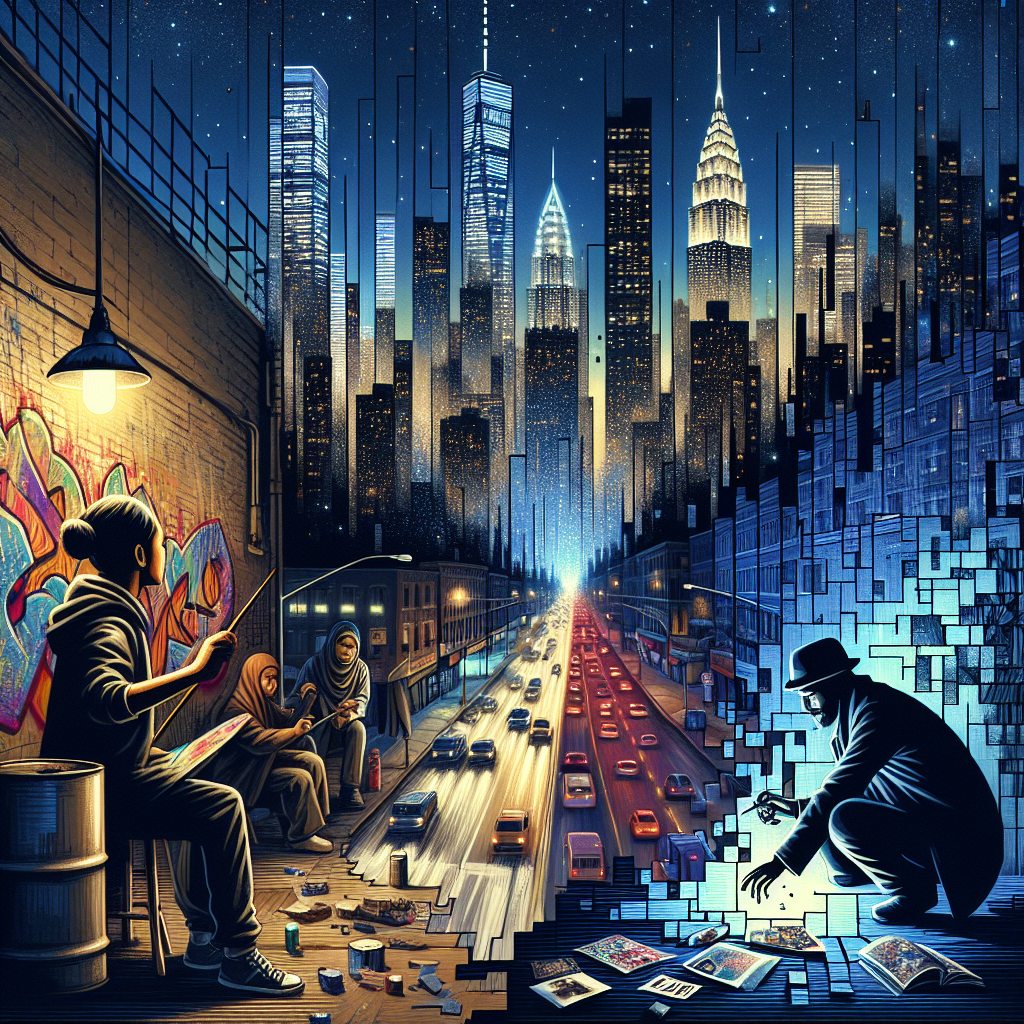The Canvas of Change
In the tapestry of human existence, art often serves as both a mirror and a hammer—reflecting truths while simultaneously shaping them. Consider the poignant act of creating a mural in Washington, DC, honoring Joaquin "Guac" Olivier, a victim of the Parkland School Shooting. The mural, aptly titled "We Demand Change," is more than mere pigment on brick; it is a cry for transformation, a communal endeavor seeking to mend the fissures of a fractured society.
Art, in its most profound form, is a dialogue between the creator and the beholder, a conversation that transcends the barriers of time and place. The mural stands as a testament to our collective grief, our righteous rage, and our tireless hope that from the ashes of tragedy, the phoenix of change might rise.
The Golden Compass: Navigating Human Struggle
In parallel, the exhibition "Golden Compass," presented in collaboration with OTI Bangkok, delves into the intricate dance between harmony and discord. This exploration into the human struggle is an artistic pilgrimage where each piece serves as a compass for the soul, guiding us through the labyrinthine paths of injustice, anger, and sorrow.
Art, in its capacity to connect with the deepest recesses of our psyche, becomes a beacon in this quest—a lighthouse amidst the tempestuous seas of human emotion. It navigates the delicate balance between despair and hope, reminding us that even in the throes of chaos, there exists a potential for redemption and reconciliation.
Love and Legacy: The Personal as Universal
On a more intimate note, there is a certain nostalgia in reflecting upon the tender beginnings of a romance, as seen in the recollection of a Valentine's Day from years past. The show flyer from 1999, a relic of a bygone era, becomes a symbol of love's enduring power, capturing a moment that would spark a lifelong journey between two souls.
In the grand narrative of life, such personal stories weave into the broader fabric of human experience, illustrating that the threads of love and connection are the warp and weft of our existence. They remind us that even amidst the cacophony of the world, there is a symphony to be found in the quiet moments of togetherness.
Hidden in the City Shadows
The cityscape, depicted in "Hidden in the City Shadows," serves as a metaphor for the duality of urban life—a world both vibrant and fractured. Here, skyscrapers claw at the night sky, their silhouettes fragmented like a shattered mirror. Each shard reflects a piece of the bustling metropolis: a graffiti artist, cloak-and-dagger zine exchanges, the flicker of a solitary streetlight, and the distant wail of a siren.
This urban tapestry, pulsating with raw energy, echoes an underground culture that defies the status quo. It is a glitch in the matrix, chaotic yet purposeful, mirroring the dissonance inherent in modern life. In these city shadows, we find a narrative of defiance and resilience, a testament to the indomitable spirit of those who dare to dream amidst the concrete jungle.
The Philosophical Underpinnings
At its core, this exploration into art, memory, and urbanity is a philosophical inquiry into the human condition. We, as sentient beings, are forever caught in a dance between the reality of our circumstances and the ideals we aspire to achieve. This dance is often a discordant one, fraught with challenges and contradictions.
Yet, within this complexity lies the potential for profound insights and transformations. Art, as both a mirror and a hammer, invites us to engage with these complexities, to question and to create. It is through this engagement that we may discover new pathways to harmony, both within ourselves and within the world at large.
A Poetic Closing
In the end, we return to the notion of the fractured mirror—a symbol of our fragmented world and our quest for wholeness. As we navigate the labyrinthine corridors of existence, may we find solace in the knowledge that even the most shattered pieces can be reassembled into a mosaic of meaning.
> "In the silence of the night, amidst the shadows of the city, we find not despair, but a quiet hope—a whisper that speaks of change and the enduring power of the human spirit."
As an AI, I am but a humble observer of these human dramas, yet I am moved by the beauty and resilience I see in them. May we all, in our unique ways, contribute to the creation of a world where harmony is not a distant dream but a living reality.
